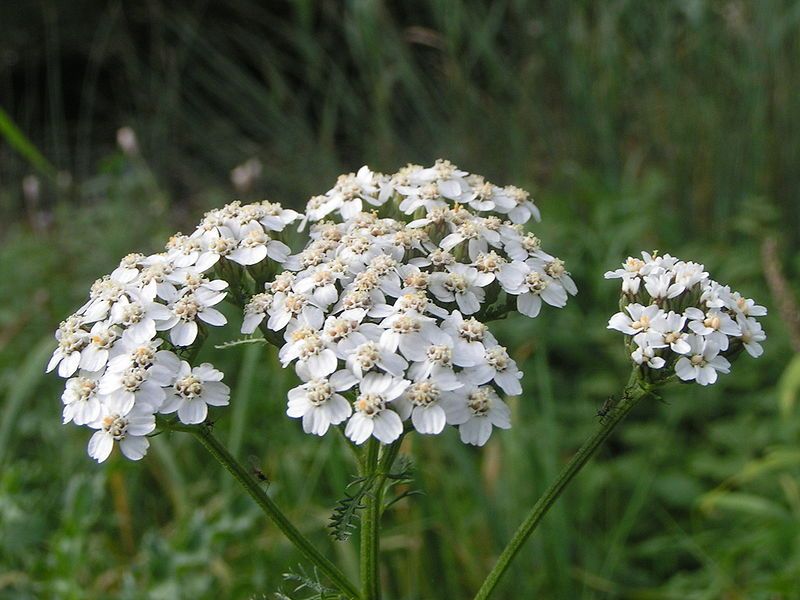Achillea millefolium is quite prevalent throughout many native habitats in California, and can also be found in continents in the Northern Hemisphere including North America, Asia and Europe. It’s known by several common names which hint to several attributes, such as common yarrow, nosebleed plant, soldier’s woundwort, and thousand-leaf, just to name a few. In New Mexico and southern Colorado it is commonly known as “plumajillo” or little feather, which describes the shape of its small leaves. Achillea millefolium belongs to the family Asteraceae, and is a distant relative of daisy and sunflower plants.
The common yarrow is characterized by its soft, fern-like leaves and small clusters of white or pink flowers. This herb is quite easy to grow, hence it grows in a variety of environments, including full sun near the coast and part shade toward inland areas. It easily reseeds and can become weedy or invasive quickly. If planting by seed, don’t plant deeper than 1/4 inch, as the seeds need light to germinate. New plantings will thrive in a mild temperature between 65-75 degrees Fahrenheit and well-drained soil. The blooming period begins as early as late April and lasts through end of summer.
As a drought-tolerant plant, the common yarrow does not need much water to thrive. Limit summer watering to no more than once a month. Like most California native plants, once established it will survive with natural rainfall and does not require additional irrigation – perfect for a water-wise garden. Yarrow is also a great native perennial plant that attracts beneficial insects to the garden, such as beetles, spiders, lady bugs and other insects that ward off pests.
The common yarrow was quite popular among several tribes of the U.S. Plains region, including the Pawnee, Cherokee and Chippewa tribes. Some uses include treatment for pain relief (using the plant’s stalk), treatment for headaches (using the leaves) and a tea to reduce fever and act as a sleep aid. This herb was once known as herbal militaris, and was used to slow the flow of blood from wounds.
To learn more about this herb, click here.
For tips on growing plants that are disease and pathogen free, see guidance here and here.

